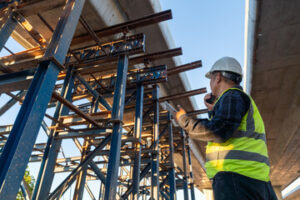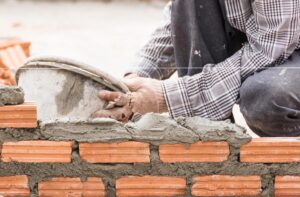From gold rush cabins to WWII Quonset huts, Metal Buildings Oklahoma have a long history of innovation. They can span a great distance with minimal internal support beams, making them ideal for many structures.

They also provide more open space than traditional building materials do. This makes them perfect for storage facilities, community centers, and more.
Rigid frame metal buildings use a series of columns and beams to transfer shear and moment forces to the foundation. The rigid connections between the framing members allow them to withstand high wind loads and other extreme weather conditions, including heavy snowfall, torrential rains, raging fires, and low magnitude earthquakes. These structures also offer nearly unlimited interior space, which makes them ideal for agricultural and commercial uses.
Although they’re often compared to light-gauge steel tubing-framed buildings, rigid frames are a more substantial alternative. Because the metal in these buildings is stronger, they can support a greater amount of weight. Unlike other types of metal building kits, the components of a rigid-frame structure are precision-manufactured and engineered to specific tolerances. This allows for a clear-span design without adding extra support columns or structural modifications.
If you’re planning on installing service doors or windows in a rigid frame structure, it’s important to consider how the rod bracing will be located. This is because the location of these points cannot be moved on site without compromising the integrity of the structure. It’s also helpful to work with a knowledgeable Building Consultant during the design process in order to ensure that the location of the service openings does not interfere with the rod bracing.
Because they’re made of strong metal, rigid frame buildings are a smart choice for those who need to store and maintain valuable equipment. Agricultural industries are especially enthusiastic about these steel structures because they provide plenty of room to house large vehicles like combine harvesters and dairy equipment. Additionally, the construction material used in rigid-frame steel buildings is less prone to mold, mildew, and rot than wood framing.
Choosing the right type of metal building depends on several factors, including your budget, location, size, and purpose. When selecting a contractor, be sure to talk to them about the type of frame you’re interested in, as well as the materials and methods they use for building projects. It’s best to hire a commercial builder who’s familiar with these types of structures, rather than a residential contractor who may not understand the nuances and requirements of pre-engineered metal buildings.
Arch-Style
The arch-style metal building, also known as the Quonset Hut, is a durable and inexpensive option that can be customized to fit your needs. They are popular for garages and workshops, but can also be used as warehouses and industrial buildings. They are made from steel, which is incredibly strong and durable against harsh weather conditions.
They are non-combustible, which saves you on your energy costs and may help you lower your insurance premiums. These factors make arch-style buildings a smart investment for your home or business.
Like all pre-engineered buildings, the cost of a metal arch building depends on a number of factors. You’ll need to account for the cost of your building, land preparation (whether that’s a concrete slab or pier foundation), customization options, permit fees and the cost of construction. Luckily, many manufacturers offer on-site support to help you get your building up and running for as little money as possible.
The biggest difference between the arch-style and straight-wall models is their design. The curved walls of the Quonset structure mean that it is more suited to specific uses, while the straight walls of the straight-wall model are more versatile and suitable for a wider range of applications.
In recent years, arch-style buildings have become extremely popular in rural Canada. Their steel construction allows them to withstand extreme weather conditions, including heavy snow loads. Their durability makes them an excellent choice for farmers who want a safe place to store their crops and other goods.
Another major advantage of the Quonset is its clear-span interior. Since the arches are self-supporting, there is no need for interior columns, which means that you can have 100% of your building’s floor space for use. This feature is perfect for facilities that require plenty of room, such as indoor riding arenas or ice rinks.
The easiest way to find a great deal on an arch-style metal building is to look for specials from recommended suppliers. Often, they will have canceled orders that they can give you huge discounts on. All you have to do is tell them a bit about your needs and they will be able to suggest the right size and features for your building.
Quonset Hut
The quonset hut is one of the more well-known forms of prefabricated metal buildings. It is easy to recognize because of its distinctive curved roof, which earned it the nickname “hoop house.” Quonset huts are also flexible in terms of length and width, making them ideal for a variety of different purposes. They can be clad in just about any material and configured with numerous doors and windows. They are also lightweight, meaning they can be moved easily from one location to another.
During WWII, the United States Navy needed portable structures that could be shipped in pieces and assembled without skilled labor. The company George A. Fuller was approached to create a simple building that could be used for airstrip hangars, bakeries, barracks, chapels, isolation wards, latrines and much more. A Providence firm created a system for constructing the buildings from curved corrugated steel sheets, which were bolted together and secured with plywood ends. The huts were quickly shipped to far-flung military outposts. Reportedly, a team of ten men could set up an entire hut in one day.
Today, the buildings are still being used for various purposes, including warehouses, repair shops and even homes. They are typically located on farms and other rural locations, as well as in cities and towns. The buildings are inexpensive to purchase, and they can be a cost-effective way to expand or add storage space. The design of the building makes it easier to install electrical and plumbing systems, which can help reduce construction costs.
Although Quonset huts are durable, they do not provide the same level of durability as rigid-frame buildings. They can be affected by severe weather conditions, including heavy winds and snow. Those who are planning to use a Quonset hut for longer periods of time may want to consider adding insulation and other modifications. The structure’s rounded construction also means that there is less headspace than in rigid-frame buildings, which can be an issue for those who need ample storage space.
Fortunately, manufacturers are continually adapting their Quonset designs to offer more options. The Q-Model is a popular option that combines usable space with durability, while the A-Model offers a more traditional gable appearance. There are also straight-wall structures that resemble those of conventional modern buildings.
Metal Shed
Whether you’re looking for a place to store your lawnmower or the tools and equipment you use in the garden, a metal shed can be an ideal option. These buildings are relatively easy to assemble, durable, and affordable. They also offer a large amount of storage space. They also tend to have a lower profile than other types of sheds.
If you’re worried about the security of your shed, consider a model with an integrated steel floor and doors with heavy-duty framing. This can make the shed a lot harder to break into than its plastic or wooden counterparts. Some manufacturers even provide high-security features such as steel lock housings or three point locking mechanisms for an added level of protection.
The walls of a metal shed are typically made from sheet metal that has been ribbed or corrugated to increase their strength and resilience. The metal is often galvanised, which provides further corrosion resistance. This makes them suitable for outdoor use, even in harsh climates. If you live in an area prone to severe weather, look for a shed with a snow or wind load rating. These models will have heavier-duty framing and are usually more expensive.
While many metal sheds are supplied without a base or floor, some companies do offer optional bases for their products. These are designed to screw into the ground (augers) or bolt onto paving or concrete foundations. The lack of a floor can lead to problems with condensation and moisture in the soil, but this is easily remedied by installing vents in the roof.
As with all sheds, the maintenance of a metal shed requires some special care. Regular inspections can help prevent problems and catch them early, before they become more serious. Rust prevention is especially important, and touch-up paint is a good idea to seal any scratches or exposed areas. It’s also a good idea to regularly lubricate hardware, as this will prevent friction and keep it working smoothly.
The most common problem with metal sheds is leakage, particularly during storms. A well-maintained shed should have a drain to direct water away from the building. In addition, it’s a good idea to periodically check the roof for damage and repair any dents promptly. Ventilation is also important, as condensation can cause mold and mildew to grow inside the shed.
